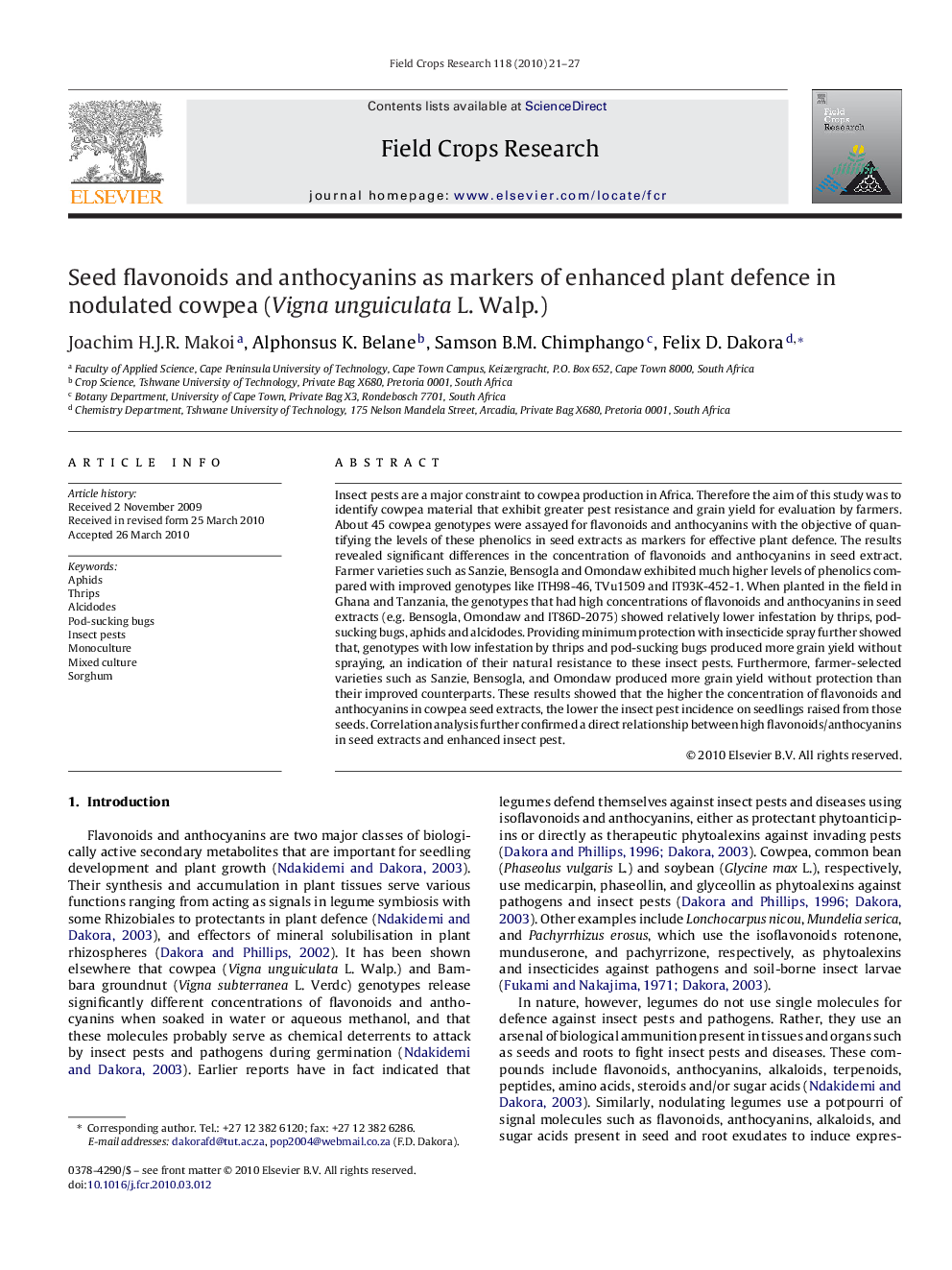| Article ID | Journal | Published Year | Pages | File Type |
|---|---|---|---|---|
| 4510908 | Field Crops Research | 2010 | 7 Pages |
Insect pests are a major constraint to cowpea production in Africa. Therefore the aim of this study was to identify cowpea material that exhibit greater pest resistance and grain yield for evaluation by farmers. About 45 cowpea genotypes were assayed for flavonoids and anthocyanins with the objective of quantifying the levels of these phenolics in seed extracts as markers for effective plant defence. The results revealed significant differences in the concentration of flavonoids and anthocyanins in seed extract. Farmer varieties such as Sanzie, Bensogla and Omondaw exhibited much higher levels of phenolics compared with improved genotypes like ITH98-46, TVu1509 and IT93K-452-1. When planted in the field in Ghana and Tanzania, the genotypes that had high concentrations of flavonoids and anthocyanins in seed extracts (e.g. Bensogla, Omondaw and IT86D-2075) showed relatively lower infestation by thrips, pod-sucking bugs, aphids and alcidodes. Providing minimum protection with insecticide spray further showed that, genotypes with low infestation by thrips and pod-sucking bugs produced more grain yield without spraying, an indication of their natural resistance to these insect pests. Furthermore, farmer-selected varieties such as Sanzie, Bensogla, and Omondaw produced more grain yield without protection than their improved counterparts. These results showed that the higher the concentration of flavonoids and anthocyanins in cowpea seed extracts, the lower the insect pest incidence on seedlings raised from those seeds. Correlation analysis further confirmed a direct relationship between high flavonoids/anthocyanins in seed extracts and enhanced insect pest.
